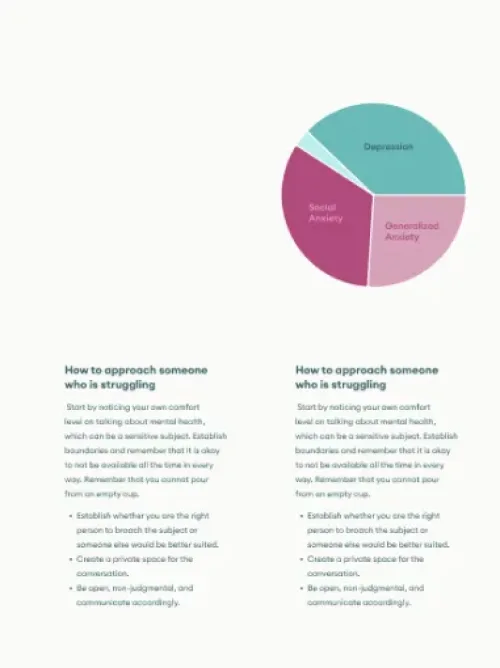Reducing Burnout in the Workplace is Possible with These Tips

5 Minute Read
The pace of change and uncertainty can be relentless, and employees may be doing their best while leaders are also doing their best to accommodate various needs. Over time though, stress caused by change and individual or organizational factors can become burnout if it becomes chronic.
The World Health Organization defines burnout as a “syndrome conceptualized as resulting from chronic workplace stress that has not been successfully managed.” If your employees are feeling burnout, you may notice this in their performance – they may be less productive, make careless mistakes and overall seem depleted. If you ask them how they’re feeling, you’ll likely pick up on some cynism related to the job and mental distance or generally negative feelings and perspectives.
So, as a leader, what can you do to help reduce burnout in the workplace?
Our experts have shared their best practices and tips to help you support your team:
RECOGNIZE STRESS VS BURNOUT
Psychologists often use the 3 Rs of stress management to help those who are struggling – Recognize, Respond and Resilience. The first step is to help employees recognize the difference between stress and burnout. There are some common warning signs to watch out for, however, the symptoms can vary across individuals.
| Stress | Burnout |
| Characterized by over-engagement | Characterized by disengagement |
| Emotions are overreactive | Emotions are blunted/flat |
| Produces urgency and hyperactivity | Produces helplessness and hopelessness |
| Loss of energy | Loss of motivation, ideals, and hope |
| Can trigger anxiety | Can trigger detachment and depression |
RESPONDING TO STRESS
We’ve covered the first R (to Recognize) above, the next step is Respond.
Prioritizing self-care will start the process toward recovery or even prevention of burnout. Here are a few ideas to offer employees if they’re ready to take care of themselves as part of their response plan:
Build a relaxation practice
Ex. Schedule time around work / family hours to do some yoga, mediation, deep breathing
Connect with others
Ex. Call your colleague for some connection time and get to know them better
Control what you can
Ex. Take action and make decisions in the areas of life you have control over instead of dwelling on the areas you can’t control
Set boundaries and limits
Ex. Learn to say no and know when you’ve taken on too much
Know and live your values
Ex. Understand what’s important to you and live accordingly
Reframe your thoughts/perspectives
Ex. When you experience a challenge, choose to see it as an opportunity to grow
Take care of personal & health needs
Ex. Meal prep, exercise, drink enough water, schedule social activities and consider tracking finances
Find what makes you happy
Ex. Find work-life balance by exploring new hobbies and make time for everything that fills you with joy
Make an active choice around what you do and don’t pay attention to
Ex. Take a look at both external factors (technology use and environment) and internal factors (behaviors and thoughts) that are within your control and decide what you’ll give your time and energy to
The tips employees choose to help manage the stresses in their life might vary by stressor and length of time, but the key is to build and practice using their various tools to prevent themselves from feeling burnout.
BUILDING RESILIENCY
Building resiliency is the last R as part of the stress management toolkit.
Psychology Today defines resilience as “the psychological quality that allows some people to be knocked down by the adversities of life and come back at least as strong as before.”
Resilient people will display certain characteristics, such as:
-Perceiving self and abilities in a positive light
-Making realistic plans and sticking to those plans
-Having an internal locus of control (vs. external locus of control)
-Good communication skills
-Viewing self as fighters (rather than as victims)
-Possessing high emotional intelligence and healthy emotional regulation
What would help employees build resilience?
It can start with maintaining healthy relationships with colleagues, family, friends and within their community; trying to see crises as surmountable (instead of unbearable); controlling only what they can; developing realistic goals, making decisions and taking action; using opportunities for self-discovery; developing confidence in themselves and others; keeping a long-term perspective and maintaining a hopeful outlook.
If you are finding your team is struggling with mental health challenges, we can help. CloudMD provides organizations with Employee Assistance, Mental Health Supports, Telemedicine, Absence Management and Occupational Health & Safety. Connect with us to bring this innovative program to your organization.




